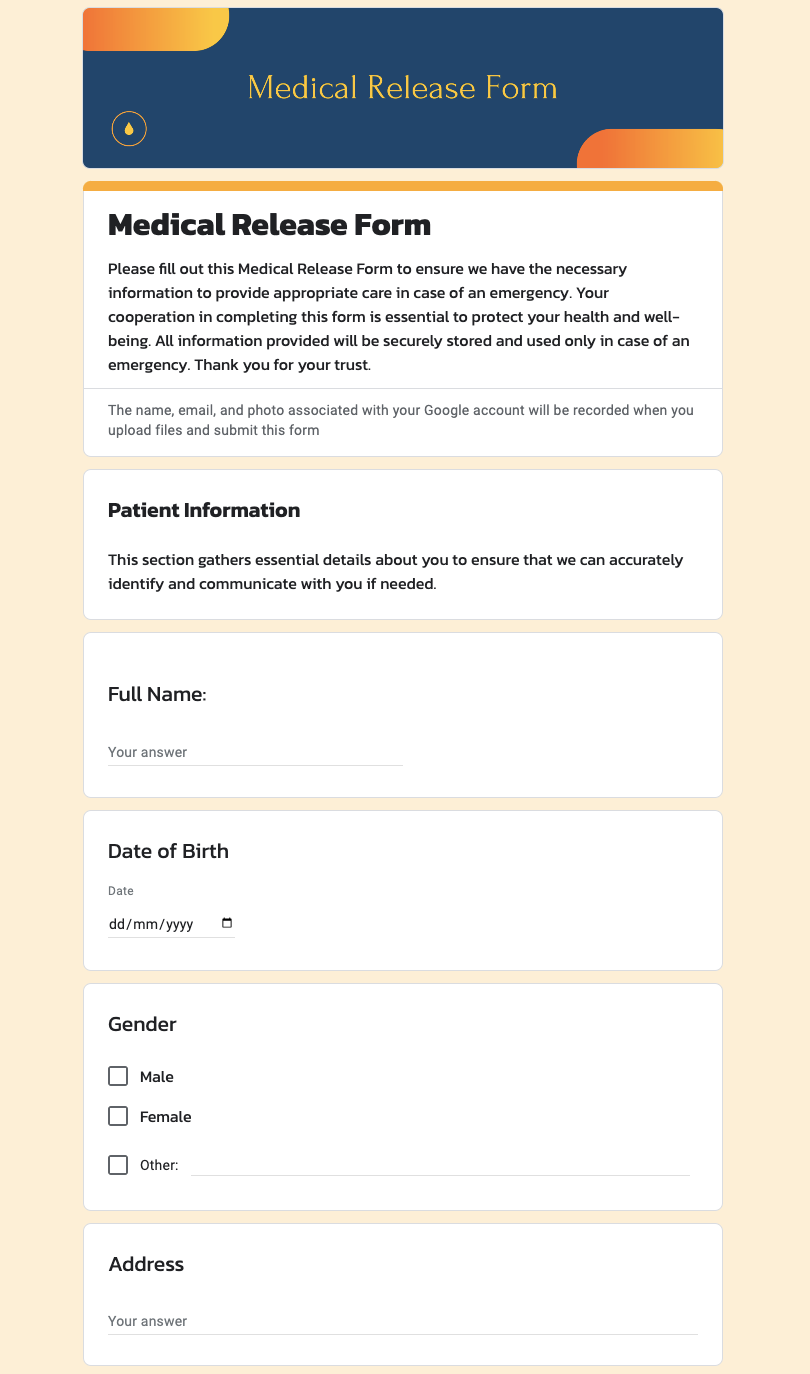Medical Release Form
FREE
A Medical Release Form provides a crucial benefit by ensuring that your healthcare information is readily accessible when needed most. This form authorizes trusted individuals or healthcare providers to obtain your medical records, facilitating swift and accurate medical care in emergencies. By using this form, you streamline communication between medical professionals and loved ones, reducing delays in treatment. Secure your peace of mind and protect your health by completing a Medical Release Form today—it’s a simple step that ensures you’re prepared for any medical situation.



